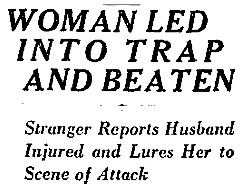January 2, 1927
Los Angeles

The good people of Los Angeles were reminded today of a quieter, simpler time—a time known as "1921". A magical time of Teapot Domes, and Tulsa Tumults, and shotgun blasts to the face. We collectively remembered the sensational trial of Arthur C. Burch and Madalynne Obenchain, dismissed following jury disagreements, regarding the August 6, 1921 Beverly Glen shooting and .12 gauge buckshot that took apart J. Belton Kennedy’s head. (And now, our obligatory Kennedy "Gaelic For Ugly Head" Kennedy evidence: the shots were fired from a clump of bushes [California: growing better grassy knolls since 1850]; the first shot missed; there was a beautiful woman at the scene, and mysterious tramps…anyway.)
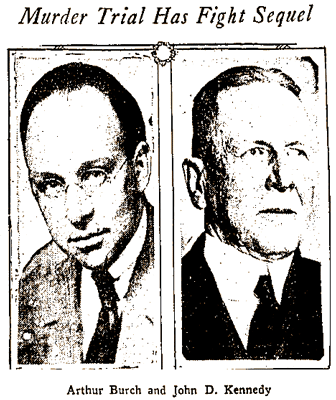 Seems that J. Belton’s father, John D. Kennedy, of 844 South Westlake, never got over the death of his son, or the exoneration of the accused. So today the sixty two year-old is in court on the charge of assault and battery. He headed over to the Terminal Warehouse Building on East 7th where Burch worked in the insurance game. As Burch was innocently hauling some fire extinguishers from one place to another, he suddenly heard “I’ve been waiting a long time but now I’ve got you!” – and was then struck in the face and seized by the throat, but was rescued before he felt the last bit of life choked from him.
Seems that J. Belton’s father, John D. Kennedy, of 844 South Westlake, never got over the death of his son, or the exoneration of the accused. So today the sixty two year-old is in court on the charge of assault and battery. He headed over to the Terminal Warehouse Building on East 7th where Burch worked in the insurance game. As Burch was innocently hauling some fire extinguishers from one place to another, he suddenly heard “I’ve been waiting a long time but now I’ve got you!” – and was then struck in the face and seized by the throat, but was rescued before he felt the last bit of life choked from him.
Authorities were summoned, and said Kennedy the Elder, later, “The affair occurred when my emotions overcame me. I have no regrets and will gladly account for my actions at the proper time and place. When I went in the building no such idea entered my mind, but when I saw him [Burch] coming down the hall I could not restrain myself.
“This is the fist time I have met him fact to face since his trials for the murder of my boy. At the sight of him I was seized with a frenzy and choked him until he began squealing and they came and separated us.”
“I believe he has some pathetic obsession toward me,” Burch declared.
Mrs. Obenchain, living in seclusion in Los Angeles, declined to comment on the matter.
On February 21, John D. Kennedy changed his plea from not guilty to guilty and Municipal Judge Richardson gave him thirty days, suspended, with the caveat: that if Kennedy saw Burch coming, Kennedy was to “go to the other side of the street.”
That, Kennedy said, he could do.


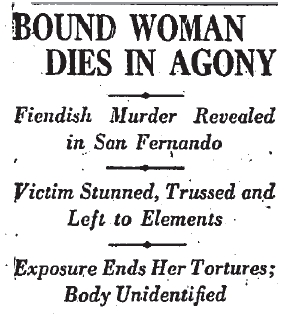 The body of an unidentified woman was discovered off of Mulholland St. (now called Foothill Blvd.) in San Fernando today.
The body of an unidentified woman was discovered off of Mulholland St. (now called Foothill Blvd.) in San Fernando today.

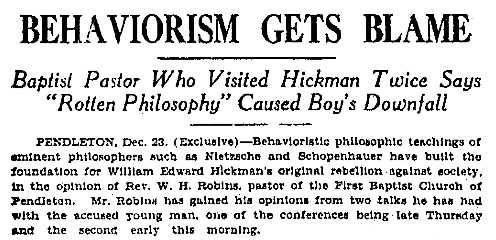


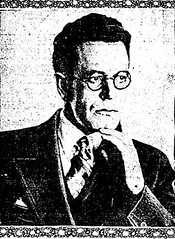 If there is an explanation for the obvious overkill in the murder of Albert Snyder, it must be that Ruth’s previous attempts to snuff out the life of her husband (twice by asphyxiation and once by poison) had failed – and she wasn’t about to give up. Ruth had persuaded her husband to take out a double indemnity policy, which would pay her in the event of his accidental death. It was the lure of the $97,000 worth of life insurance that compelled her to continue with her diabolical schemes until she succeeded.
If there is an explanation for the obvious overkill in the murder of Albert Snyder, it must be that Ruth’s previous attempts to snuff out the life of her husband (twice by asphyxiation and once by poison) had failed – and she wasn’t about to give up. Ruth had persuaded her husband to take out a double indemnity policy, which would pay her in the event of his accidental death. It was the lure of the $97,000 worth of life insurance that compelled her to continue with her diabolical schemes until she succeeded. 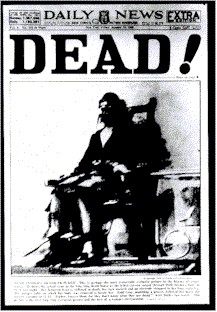

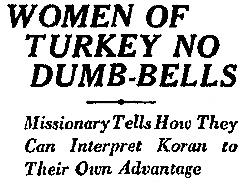 December 15, 1927
December 15, 1927 


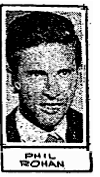


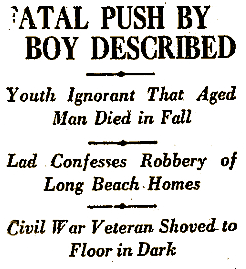
 November 24, 1927
November 24, 1927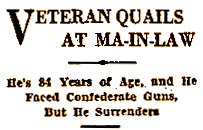 In further news of the Boys in Blue, another Damn’d Yankee, this one in Spokane, has problems of another variety. “I’m living on borrowed time,” said Enoch A. Sears, 84, “far past my allotted three score and ten, and I only want peace and quiet.” He has filed for divorce from his wife of one year, and has departed his home, leaving it to his wife, 59, and her mother, 79. Enoch simply stated he was “too old to become accustomed to living with a mother-in-law.”
In further news of the Boys in Blue, another Damn’d Yankee, this one in Spokane, has problems of another variety. “I’m living on borrowed time,” said Enoch A. Sears, 84, “far past my allotted three score and ten, and I only want peace and quiet.” He has filed for divorce from his wife of one year, and has departed his home, leaving it to his wife, 59, and her mother, 79. Enoch simply stated he was “too old to become accustomed to living with a mother-in-law.”